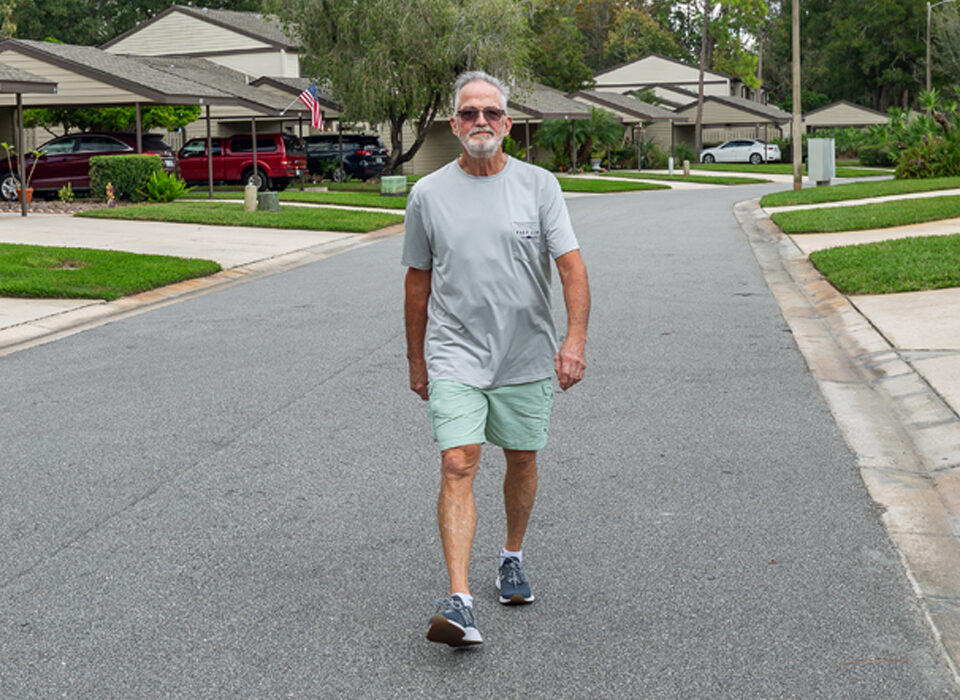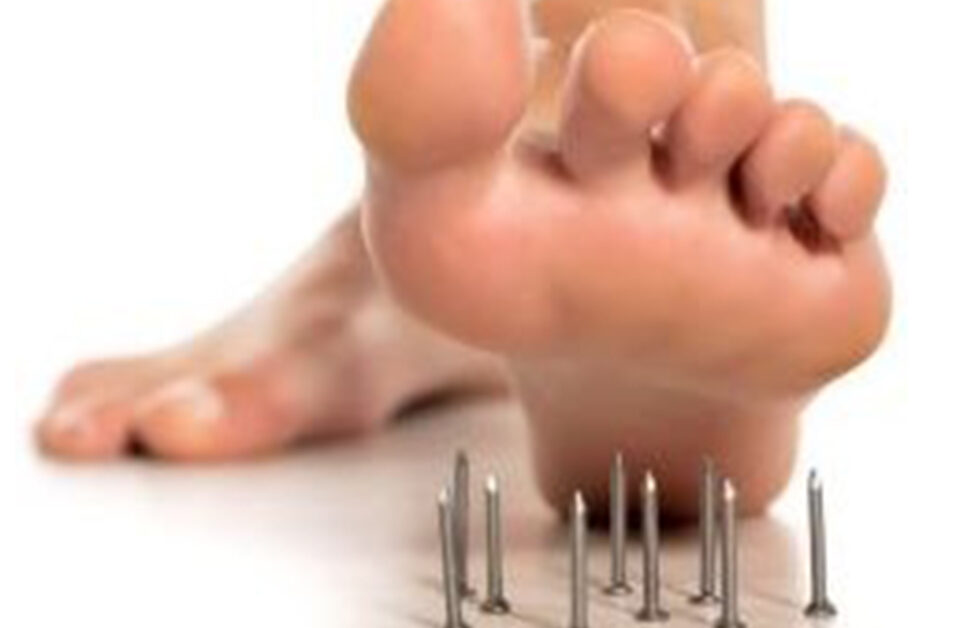About 30 million Americans suffer from an often aggravating and sometimes debilitating condition called peripheral neuropathy. Typical symptoms are tingling, numbness and pain in the legs, feet, hands and arms, and Bob Smith is among those millions to struggle with it. Bob, 63, first began to experience the effects of peripheral neuropathy about five years ago. He says his failure to adequately control his diabetes was the reason he developed the condition. Diabetes is the most common cause of peripheral neuropathy, which results in damage to the nerve fibers outside of the spinal cord and brain. However, there are more than 100 types of peripheral neuropathy and nearly as many causes. Peripheral neuropathy can also develop because of autoimmune disorders, chemotherapy and extended exposure to large quantities of certain toxins, including pesticides. Anyone who smokes regularly, drinks alcohol heavily or is obese is more susceptible to the condition. The good news for anyone with peripheral neuropathy is that the condition can be treated. And one of the most advanced therapies is called RealWave®. RealWave ultrasound is only available at RealWave Neuropathy Treatment Centers, which recently opened in Seminole, will soon open in Dunedin and has five established locations in the Detroit metro area and four in north Georgia. RealWave offers a safe, effective treatment option that uses a specially tuned ultrasound device to deliver focused energy directly to the diseased area and has two patents pending in the United States. The ultrasound energy stimulates more efficient energy production in nerve cells. At the same time, it also triggers regeneration in the axon, the portion of the nerve that carries electrical impulses, and in the myelin sheath, the protective sleeve wrapped around each axon. Ultrasound also increases blood flow to the area, improving the delivery of oxygen and nutrients to support nerve healing further. These effects allow the nerves to function more normally, relieving neuropathy symptoms.
Covered by Medicare
At RealWave, treatment plans are personalized depending on the patient’s symptoms and type of neuropathy. Plans include evaluations and assessments of nerve conductivity and blood circulation, and typically call for patients to receive treatments twice a week for 12 weeks to achieve the best results. Those results vary depending on the cause of the neuropathy and symptoms, but the practice reports that 89 percent of treated patients see an improvement in symptoms within 12 weeks. RealWave further reports that half of their patients report at least a 50 percent reduction in symptoms while one-third of patients report more than a 90 percent reduction in symptoms. Treatments are covered by Medicare and many Medicare Advantage and insurance plans. For patients seeking quicker results, RealWave can schedule daily appointments for the first two weeks. RealWave also offers occasional maintenance treatments to ensure ongoing relief. Throughout each treatment cycle, RealWave monitors the patient’s progress by measuring blood flow and nerve conductivity in the affected areas, whether it be the arms, hands, legs or feet.
A Worsening Situation
Bob first experienced the pain, numbness and tingling associated with peripheral neuropathy in his ankles. Before long, those symptoms spread to his legs, where he was also experiencing restless leg syndrome, a condition that causes an uncontrollable urge to move the legs. “I was experiencing a lot of tingling, a lot of pain,” Bob says, “It would take several hours to subside when I was trying to fall asleep, and it was also waking me up during the night.” Working from home during the COVID-19 pandemic did him no favors. “I think the lack of activity was what made it worse because it became increasingly difficult to walk,” Bob laments. “Because I was sitting at home and wasn’t wearing shoes on a regular basis, my feet and legs became very painful.” That pain prompted Bob to search for a solution. That began with a visit to an endocrinologist, who tested Bob’s blood sugar level (A1c) and found it was over 10 percent, easily in the diabetic range. At Bob’s age, it should be 7 percent or less, so he was prescribed medications aimed at lowering the level. According to the American Diabetes Association, “Keeping your blood glucose (blood sugar) levels on target is your best line of defense against neuropathy. You can also manage neuropathy through a healthy diet and consistent exercise routine that fits your lifestyle.” Bob followed his doctor’s advice regarding medications, and in a matter of weeks his blood sugar level was down to 8. There was a second aspect to the treatment plan that Bob could not carry out, however. “Exercise was the key to it all, but that was the part I was unable to do,” Bob says. Without exercise to augment the effects of the medication, Bob’s neuropathy pain remained. That’s why he visited the podiatrist, who fit Bob with a special pair of sneakers and custom orthotics, and suggested that he visit RealWave Neuropathy Treatment Centers.
Activity Up, A1c Down
Following his initial visit to RealWave Neuropathy Treatment Center, Bob began receiving half-hour ultrasound treatments three times a week. He describes the noninvasive treatments as “extremely comfortable.” “They take (an ultrasound) wand, and they spread a gel on your feet, and they work in small circular motions all over the foot,” he says. “I felt a little bit of a tingling with that every so often, but it didn’t hurt at all.” After the first few sessions, Bob says he noticed “a pretty quick improvement” in his symptoms. As a result, he soon reduced his visits to twice a week and eventually to once a week. Every fourth treatment included a nerve conductivity test performed by a nurse practitioner. “What they are able to do is establish a baseline, and with every subsequent treatment they are able to see what the progress is in terms of how the nerves are reacting,” Bob explains. After 30 treatments, the tingling and sharp pains caused by neuropathy were virtually gone, Bob reports. He still had some stiffness in the tops of his feet, ankles and toes, however, so he recently transitioned to treatments once every other week. “The treatments have been really helpful,” Bob says. “They’ve allowed me to reduce my (diabetes) medication, and they’ve reduced the pain I was experiencing, allowing me to increase my activity level.” Bob increased his activity level slowly, at first taking short walks up and down the street with his sister’s dog. He is now walking 2.5 miles a day. As a result, he’s “dropped a little weight,” and his A1c is in the mid-7s. In turn, he’s reduced his pain medication. Bob was taking 1,200 mg of gabapentin each night before bed, but after six weeks at RealWave, he reduced the dose to 900 mg and then to 600 mg. He is now talking to his physician about cutting down to 300 mg, and it’s largely due to RealWave, he enthuses. “Reducing the medication, increasing my activity and being able to enjoy longer walks with the dog have really been something that’s welcome” Bob says. “And that is a direct result of getting the treatments at RealWave.”








Leave a Reply